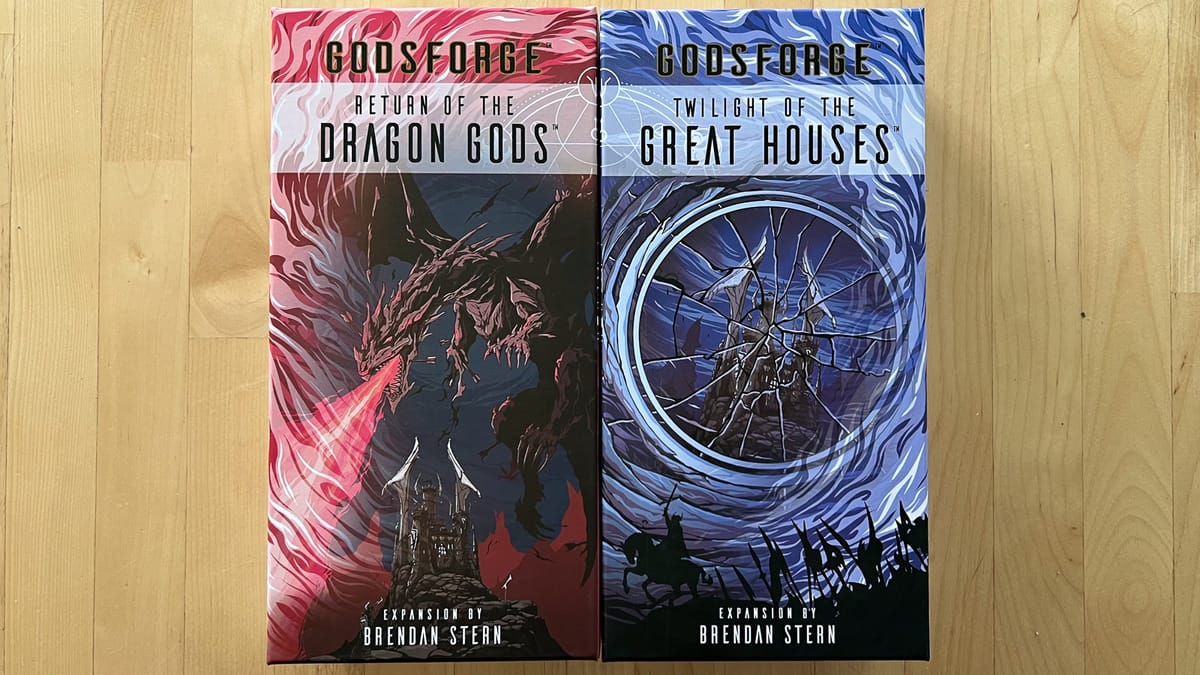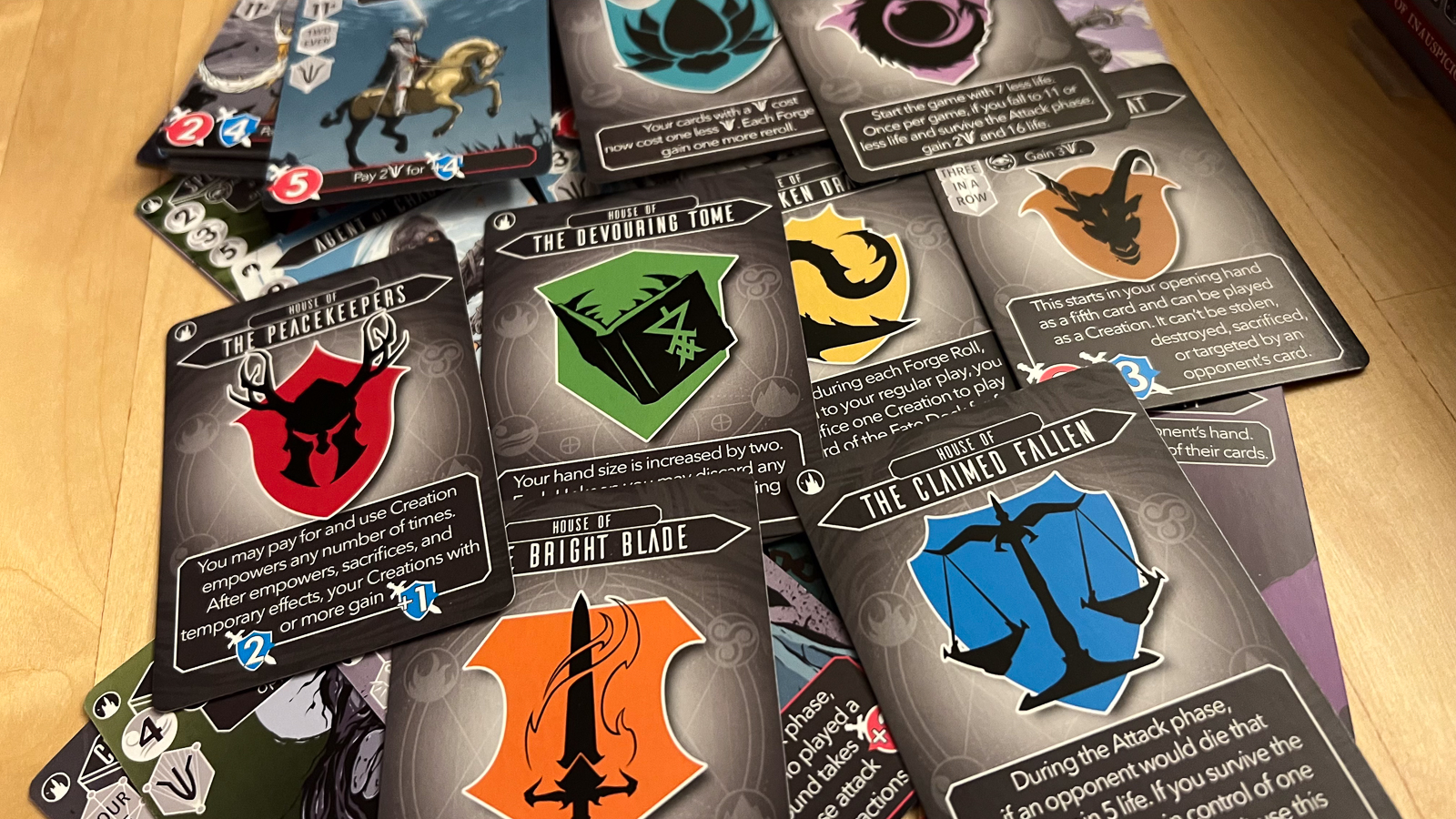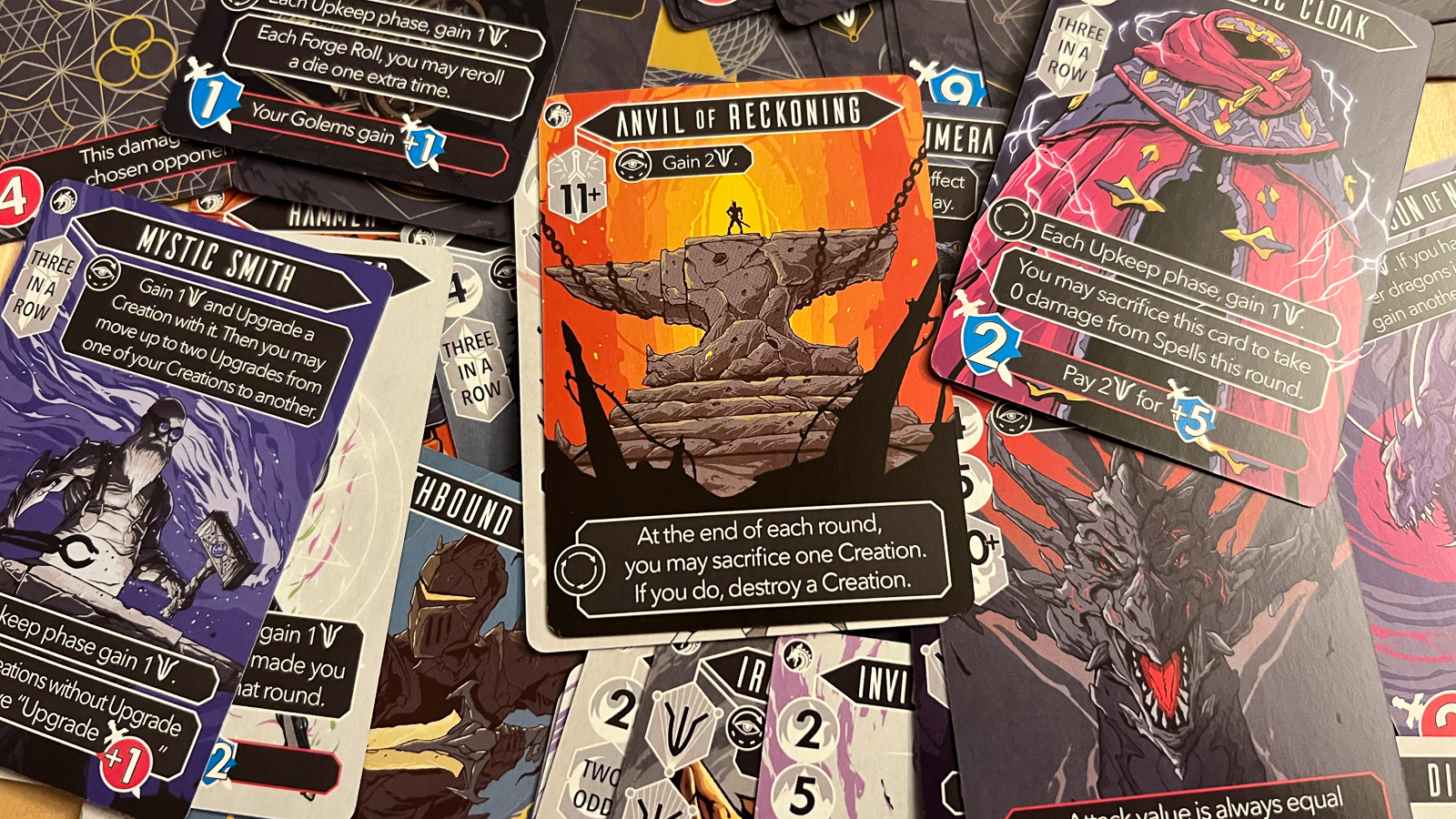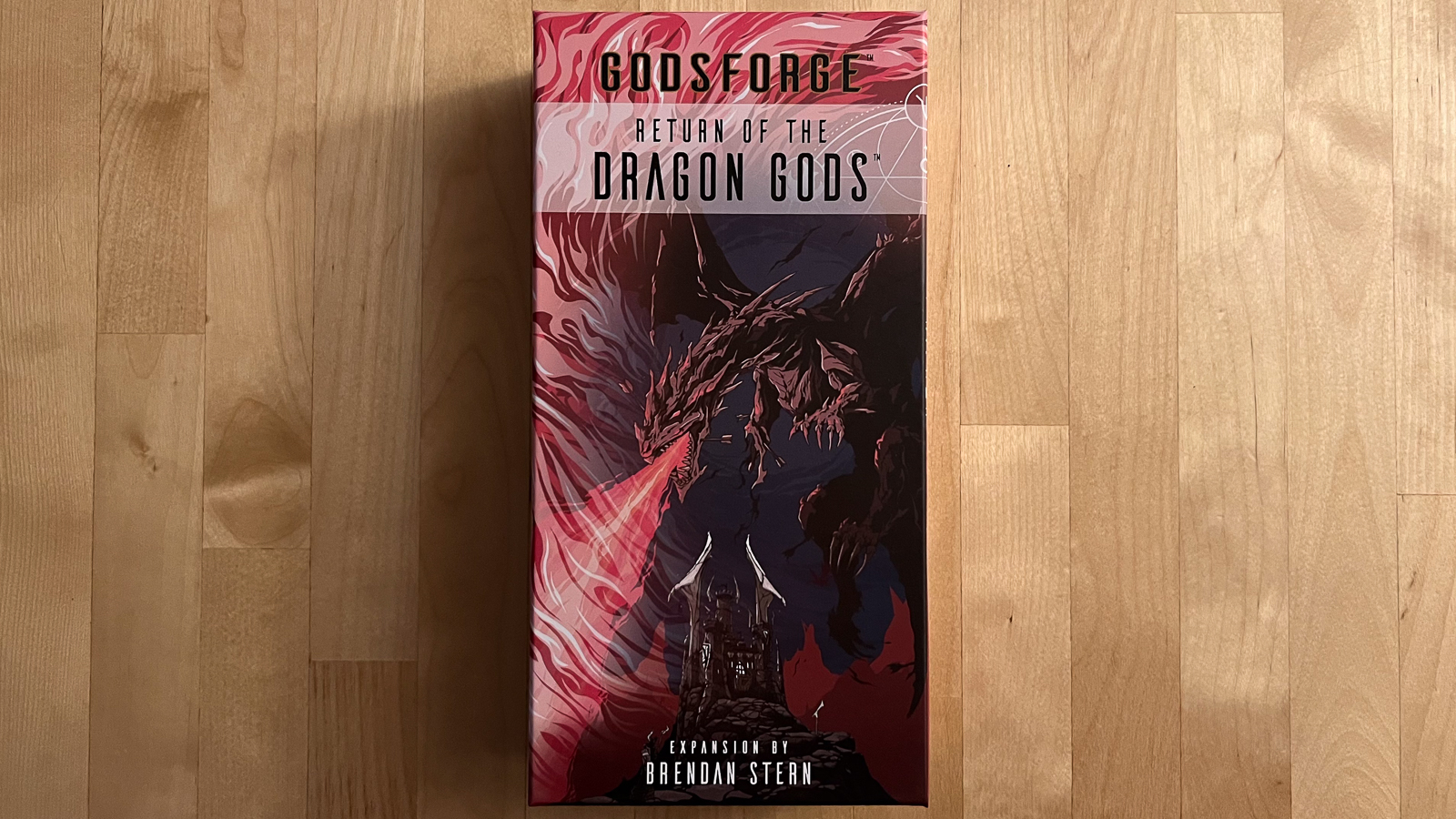
In my initial review of Godsforge, the simultaneous action wizard fight from Atlas Games, I had called the game out for being a little awkward to get going, but overall a fun fast paced action game, complete with beautiful artwork. The two expansion packs for Godsforge, Return of the Dragon Gods and Twilight of the Great Houses, take this concept and push it further by allowing more players to take part in the fight, and add strategic depth with new cards and gameplay modes.
Let’s dig in.

Once again, some top notch Godsforge gems, dice, and cards are included with both expansions.
To start with, both games introduce another full deck of cards that can be used on their own, added to the existing Godsforge deck, or put together with your own mixture of cards. For Return of the Dragon Gods, players are given Upgrades and Card Synergy, along with a whole set of powerful Dragon themed cards. Twilight of the Great Houses provides players with a new deck of cards and 16 Great Houses, which allow the player to gain a powerful ability to guide their play.

The 16 Great Houses give the player new powers and abilities which augment previously held strategies
From a narrative and art perspective, the things I think Godforge does best, these add so much more lore to the game. You’ll spend a decent chunk of time looking through Houses, which gives you some more setup and consideration when it comes to strategy. I really appreciate that, because after a few rounds of Godforge, you start to develop a few core strategies. More spells, more life, attacking multiple players at once…the new cards introduce a new paradigm.

The Dragon Gods expansion focuses on damage and combat
Packaging-wise, it’s more of the same from Godsforge. Nicely built boxes, molded plastic within, though if you look at your core game, they included enough space to combine these expansions into that box.
Playwise, both games add more Veilstones(the magical currency of the world), player tokens, and dice, bringing the total amount of players to 6 if you purchase both expansions. Considering the chaos of the game, 6 players will result in faster rounds, more spells, more last second victories. While I didn’t get to play with 6, playing with 5 people certainly made the game more fun. Lastly, the cards are marked, so it’s easy to combine and separate them again, though I suspect some players will just keep them mixed.
Moving forward, I’ll spend some time on the expansions individually.
Return of the Dragon Gods

Nicely designed packaging and art are to be expected
The first thing you’ll notice about this set is the “Upgrade” and “Synergy” mechanics. Those of us used to CCGs will understand this concept pretty quickly. Pay more Veilstones, get more power. This power can stack, and be used for various effects. What I liked about this mechanic is that it expanded the use of my field. In the original game, I found that some cards lost their use after being used once, making them excellent cannon fodder. This new mechanic means I can invest. This does help slow the game down a bit, but keeps it exciting. Synergy means that cards with specific titles gain new abilities. For example, the “Mystic Smith” adds the Upgrade ability to all creations, in a fun meta rule that combines the two rules. The Dragon Cards themselves are plenty powerful, but do cost a lot of resources. Naturally, a whole host of new spells really helps modify the game, with some cards being quite damaging, like the ridiculous Dragon’s Breath, which rewards Veilstone hoarders with the ability to at least deal 10 damage. Considering a 5-6 player game starts at 20 life, this is a big gamble.
Twilight of the Great Houses

So unlike Return of the Dragon Gods, which is focused on adding big damage, this game brings rules and cards that alter mechanics of the game. “Lose Life” and “Cannot Play Creations” can lock up players by reducing damage prevention and blocking creations. Furthermore, the 16 Great Houses bring a lot of variety and new strategic choices to the game. The House of The Pearl Serpent is a gamble card, making a player start with 7 less life, and if they survive a specific attack, they gain 16 life. The Bright Blade gives players creations +1 attack. The Blood Moon creates a benefit for sacrificing by rewarding the player with life and Veilstones…and that’s just 3 houses. The other 13 are all very unique and powerful. I found myself using The Moneychangers, which allowed me to set a dice to a number I wanted. This, plus the normal dice modification rules, really helped me fit into an improvisational strategy. The benefit of this was that some games went a little longer, which was nice. It allowed us to play more cards, see more art, and overall, have a great time.
Wrap up
Originally, I rated Godsforge a 75, because while I found it fun, I could see some limitations once you lock in particular strategies. Depending on your table and your preferences, both of the expansions really help change up the gameplay. If you’re currently playing Godsforge, I would highly recommend picking up one or both of these boxes. And if you’re not, I encourage you to go and get into some wizard fights!
Godsforge: Twilight of the Great Houses / Return of the Dragon Gods
Great
Twilight of the Great Houses and Return of the Dragon Gods help make Godsforge a more complete game by adding some wild cards and strategic depth. They keep the hallmarks of the series (art and lore) and keep the game fresh through repeated plays. Can’t wait to get into more wizard fights!
Pros
- Both sets add new spells, creations and strategic depth
- More players means more fun
- New mechanics really help change up the game and keep it fresh
Cons
- Cost of some of the cards means instant gratification isn’t going to happen
- Might be difficult to find 6 players
